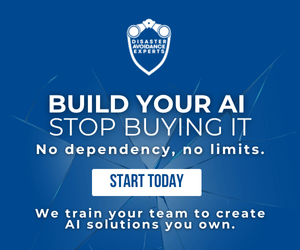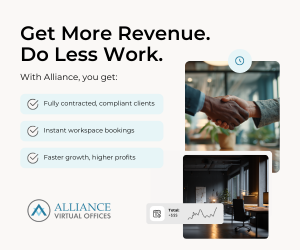- RTO mandates may reduce workforce but often push out high-performing employees with key skills.
- Real reform requires attracting and retaining talented individuals, not just reducing headcount.
- Government needs purpose, flexibility, and continuous learning to inspire top talent and drive change.
RTO is quickly becoming the new Voluntary Separation Program (VSP) — an easy, no-payout way to shrink headcount. But there’s a serious catch: it’s not leadership choosing who exits.
It’s the people with the most marketable skills who opt out.
Figures like Elon Musk and Vivek Ramaswamy, now taking on the task of reforming the civil service, may see RTO-driven attrition as a clever shortcut to workforce reduction. But here’s the paradox: it could be the very people they need to execute change who end up walking out the door.
Attrition Is a Crude Tool
It’s widely accepted that the civil service is due for an overhaul. As the world accelerates, public institutions are falling behind — weighed down by inefficiency, legacy systems, and outdated management structures.
With deeply embedded bureaucracy and sluggish responsiveness, genuine reform is necessary…not optional.
But change isn’t just about trimming budgets or downsizing staff; it’s about fundamentally redesigning how the civil service attracts, nurtures, and empowers talent to keep pace with today’s demands.
That’s why using RTO mandates as a proxy for performance misses the mark.
If RTO is being used to prompt resignations, it’s a blunt instrument. It may reduce numbers, but it fails to address the systemic problems beneath. More than that, it reshapes the workforce in unhelpful ways.
Those who leave first? Typically, it’s high-performing professionals attuned to modern work environments — people who value flexibility, creativity, and autonomy. They leave because they have better options.
Those who stay? Often individuals less inclined to pursue outside opportunities. They may be more at ease with rigid hierarchies and the status quo — the very systems that need updating.
Real reform doesn’t just mean fewer people. It requires the right people — those equipped with the mindset, tools, and skills to lead change. And replacing that kind of talent is expensive.
Gallup research estimates the cost of replacing skilled employees can reach up to twice their annual salary. The real cost, though, is harder to quantify: the loss of innovation, institutional memory, and momentum.
The RTO Paradox: Reform Needs the Very People It Risks Losing
If Musk and Ramaswamy want meaningful reform, their talent strategy has to reflect today’s labor market. Using RTO mandates to push people out only works if you’re also creating incentives for the best people to stay.
Ironically, Musk’s own companies show the opposite approach. At Tesla and SpaceX, talented employees endure demanding environments because they’re given purpose, creative leeway, and a chance to be part of something groundbreaking.
That level of motivation doesn’t come from forcing everyone back to a desk.
In civil service — where the work may lack the glamour of commercial space travel — rigid mandates don’t inspire top-tier talent to stick around. Especially when the rest of the market is offering greater autonomy and hybrid flexibility as a baseline.
How to Build the Future of Work Into Government Reform
The issues exposed by Musk and Ramaswamy’s RTO push aren’t unique to government agencies. Across industries, employers are using return-to-office mandates as silent headcount reducers. But in doing so, they often lose the very people they need to evolve.
If public sector transformation is the goal, leaders need to modernize how they build, support, and sustain their teams. Here are four places to start:
Purpose and Impact
Today’s workforce wants their work to matter. Many companies struggle to create purpose — but public service already has it embedded. Government roles directly impact communities and policy. Framing civil service as a mission-driven career can tap into that deep motivation and attract people who want their work to mean something.
Technology and Continuous Learning
Careers are no longer linear. Workers know they’ll likely change paths and skills over time. Government must invest in upskilling and provide access to modern tools so that employees grow while they serve — positioning civil service as both a place to contribute and a place to launch.
Agile Structure
Fixing bureaucracy externally means changing it internally. Agile, responsive organizations require flatter hierarchies, faster feedback loops, and greater empowerment. Building this from within makes public service more effective and more attractive to the next generation of change agents.
Customized Flexibility
Flexibility should be standard — but not uniform. Different roles, teams, and individuals need different models. Civil service should move past fixed rules about days in the office and instead build systems that focus on outcomes, trust, and well-supported autonomy.
Whether in government or business, real change is a people strategy. RTO might seem like a quick solution — but it risks gutting the talent needed to move forward.
The future of work is less about where people work and more about who you can keep inspired, equipped, and committed to building what comes next.


 Dr. Gleb Tsipursky – The Office Whisperer
Dr. Gleb Tsipursky – The Office Whisperer Nirit Cohen – WorkFutures
Nirit Cohen – WorkFutures Angela Howard – Culture Expert
Angela Howard – Culture Expert Drew Jones – Design & Innovation
Drew Jones – Design & Innovation Jonathan Price – CRE & Flex Expert
Jonathan Price – CRE & Flex Expert















